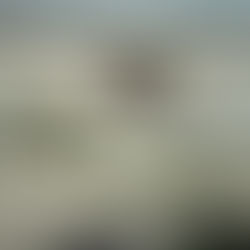History of Surfing
Early history It's practically impossible for us to ascertain when or where was a wave "ridden" for the first time. But it is assumed that the Polynesians may have done so about 4000 - 3000 years BC. They used the power of the waves to glide unscathed over the sharp reefs with a type of canoe or special boat made of woven Padang leaves. During one of their many migrations, the Polynesians were crossing the Pacific for weeks, until they finally landed about 1000 km north of the equator in Hawaii. From the very start, the Hawaiian islands, with their green-covered volcanoes, white-sand beaches, and turquoise waters, promoted the emergence of a deep and long-lasting love. It is estimated that it was around 1500 BC that the first humans began standing, lying or sitting on bundles of bulrushes and small tree trunks.

An important distinction was made between two kinds of surfboards: the "olo", which was reserved only for the chiefs and the "alaia" for the ordinary people to surf. The construction of surfboards was accompanied by rituals and the board would be consecrated during these ceremonies. On these 10-16 foot and up to 150 pound boards, surfing was limited to be driven straight. Soon thereafter, surfing became an important part of Hawaiian culture at that time, and was also referred to as the "Sport of the Kings", as the chiefs had the privilege of picking the best surfboards on the biggest waves to surf the most beautiful beaches of Hawaii. Once a year, the Makahiki festival took place in Hawaii. These celebrations still take place today. For this purpose, work was interrupted for three months to relax, play sports and enjoy feasts. The festival was accompanied by surfing competitions, which attracted thousands of spectators.
James Cook and the discovery of Hawaii

During the Makahiki Festival in 1778, Captain James Cook arrived at Kealakekua Bay with his two ships, the HMS Resolution and HMS Discovery, and was immediately welcomed by numerous Native Americans on their surfboards. The Hawaiians did not suspect what was to come in the next century. In addition to weapons, alcohol and metal, the white men brought two more essentials: diseases and religion. European viruses and bacteria destroyed about 400,000 people in the coming years, so that by 1890 the number of native Hawaiians had dropped to 30,000-40,000 people. After King Kamehameha I, whose surfing services were praised by the locals long after his death, died in 1819, the "Kapu system" of King Kamehameha ll would create the basis for Christianity which precipitated the collapse of Hawaiian culture. This year, the Makahiki Festival took place for the last time. The missionaries who arrived then replaced pagan customs with strict church practices. Surfing was then considered a waste of time, a pagan and immoral waste, and was finally banned in 1823. For the US, Hawaii became an important trading partner by the cultivation and distribution of pineapple and sugarcane, and was soon recognized as a US state. This led to a tourist rush to the Hawaiian Islands. The combination of Christian reeducation, an increasingly organized and commercialized economy, and the decline in the number of native Hawaiians had reduced surfing to mere occasional pleasure. The Briton James Cook made the first written records about surfing. The records indicate that he was initially fascinated by this sport. However, this fascination did not stop the impending decline of Hawaiian culture. The surf renaissance After the annexation of Hawaii by the US, the local population of Hawaiians was significantly decimated. As a result, surfing had been steadily declining for at least 100 years, but thanks to a few die hard surfers who could not give up their passion, surfing continued underground (or more accurately, overwater). These passionate lovers of surfing met at various meeting points on the sands Waikiki beach, which thus became the gathering place point for most surfers of that time. Thereafter, at the beginning of the 20th century, more and more "haoles" (non-Hawaiians) came to Waikiki and were marveled by the surfing natives.

For these haoles, the Hawaiian surfer was a phenomenon and soon this sport became synonymous with the paradise of Hawaii. Among these travelers was the celebrated author and journalist Jack London, who visited the Pacific Island Paradise in 1907. When he saw some Hawaiian surfers practice their ancient art upon the waves, he decided to write an article about it. London's exciting description of this new sport of surfing, which was considered to be the first coverage of surfing in the media, appeared in the October 1907 issue of "A Woman's Home Companion." That same year, Jack London set up, along with the adventurer and businessman Hume Ford and rower George Freeth, the world's first official surfer organization in Hawaii called: "Outrigger Canoe Club." This founding is essential for the further development of surfing as it marks the rebirth of surfing in the 20th century. The club still exists today. Surfing from this point on took off. Surfing schools can be found across the world, from the United States, Australia, South America, Africa, and Europe. Surfing competitions regularly take place and are much admired by the youth, adults, and elderly alike. From its ancient beginnings to its modern fad, surfing is something that capitvates us all.





















